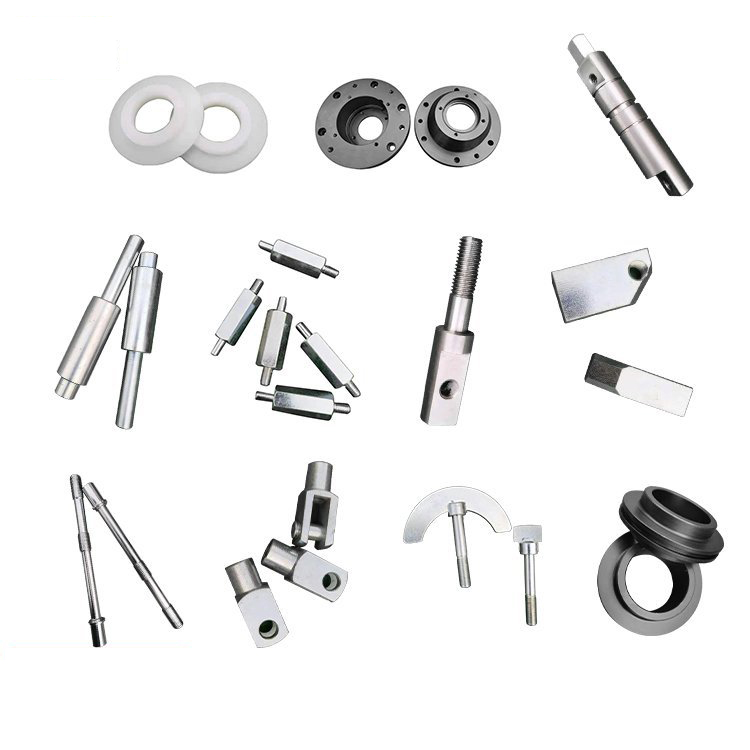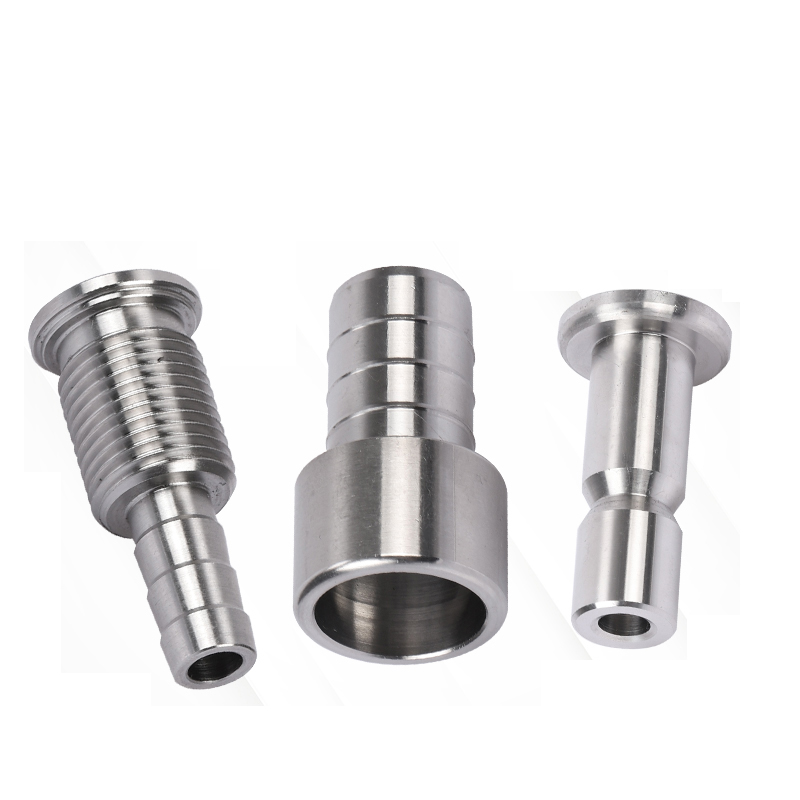
How to get good surface quality in turning?
Reasons for surface roughness of turned parts

During the lathe cutting process, various unclean phenomena on the machined surface, some are obvious, and some can only be observed with a magnifying glass. Among them, the more common ones are as follows:
1. During the cutting process of work hardening tools, due to the influence of high temperature and high pressure on the workpiece by tools and chips, the hardness of the machined surface of the workpiece is increased, which is called work hardening. The main influencing factor is the edge fillet of the tool.
2. Residual area: When the lathe turns the outer circle, the uncut area remaining on the machined surface in the cutting layer is called the residual area. Usually, the height of the remaining area is used to measure the degree of roughness. From past processing experience, it can be concluded that reducing the feed rate, reducing the main and auxiliary deflection angles of the tool, and increasing the arc radius of the tool tip can make the residual area reduced height. In fact, there are many other factors superimposed on the residual area to cause the roughness of the processed surface, resulting in the actual residual height being larger than the calculated value.
3. Built-up edge: Built-up edge is the building on the tip of the knife. During the machining process, since the workpiece material is squeezed, the chips exert great pressure on the front of the tool, and friction generates a large amount of cutting heat. Under such high temperature and high pressure, the flow velocity of the part of the chips that is in contact with the rake face of the tool is relatively slowed down due to the influence of friction, forming a stagnant layer. Once the friction force is greater than the bonding force between the internal lattices of the material, some material in the stagnant layer will adhere to the rake face of the tool tip near the tool, forming a built-up edge. When built-up edge occurs during the cutting process, its protruding chips adhere to the tip of the tool, thereby replacing the cutting edge of the cutting edge into the workpiece, so that intermittent grooves of different depths are drawn on the processed surface; when the built-up edge falls off At this time, some built-up edge fragments are bonded on the machined surface to form protruding and fine burrs.
4. Scales: Scales actually produce scale-like burrs on the processed surface. This phenomenon causes a significant decrease in surface roughness. There are four stages for the formation of scales: the first stage is the wiping stage: the chips flowing out from the rake face wipe off the lubricating film, and the lubricating film is destroyed. The second stage is the crack-guiding stage: there is a large extrusion force and friction between the rake face and the chips, and the chips are temporarily bonded to the rake face and replace the rake face to push the cutting layer, so that the chips and The machined surface produces guide cracks. The third stage is the layering stage: the rake face continues to push the cutting layer, more and more cutting layers are accumulated, and the cutting force increases. After reaching a certain level, the chip overcomes the bond with the rake face and continues to flow . The fourth stage is the scraping stage: the blade is scraped, and the cracked part remains on the processed surface as scales.
5. Vibration: When the rigidity of the tool, workpiece, machine tool parts or system is insufficient, the periodic beating is called vibration, especially when the cutting depth is large or the built-up edge is continuously produced and disappeared. Longitudinal or transverse ripples appear on the surface of the workpiece, which means that the surface finish is obviously reduced.
6. Blade reflection: uneven blade, groove marks, etc. leave traces on the processed surface.
7. Rabbing Rabbing is when the chips are discharged to the processed surface during the turning process, and the chips are entangled on the processed surface of the workpiece, so that the already processed surface causes scratches, burrs, etc.
8. Bright spots and bright bands After severe friction and extrusion due to flank wear, block or band-like bright spots are formed on the processed surface. In addition, when the movement accuracy of the machine tool is low, such as spindle beating, uneven feed movement, etc., the surface quality of the workpiece will also be reduced.
How to improve the surface smoothness of turned parts?

Factors affecting work hardening, residual area, scales, vibration and other factors will affect the surface quality of the processed workpiece. These surface defects are roughly caused by the workpiece material, tool material, geometric angle of the tool, cutting amount, cutting fluid, etc.
1. The workpiece material When processing plastic materials, the lower the plasticity of the workpiece material, the higher the hardness, the less built-up edge and scales, and the higher the surface finish. Therefore, the surface quality of high carbon steel, medium carbon steel, and quenched and tempered steel is much better than that of low carbon steel after processing. surface quality. When machining cast iron, because the chips are broken, the surface quality of cutting cast iron is lower than that of carbon steel under the same conditions. Generally, materials with good processing performance should have high surface quality. On the contrary, the surface quality is poor. Improving the processing performance of the material can improve the surface quality of the workpiece.
2. The material of the tool The material of the tool is different, and the radius of the edge fillet is different. The fillet radii of tool steel, front steel, cemented carbide, and ceramic inserts increase in turn. The larger the fillet radius, the thicker the extruded layer on the machined surface, the more severe the deformation and cold work hardening on the machined surface, which affects the surface quality of the workpiece. Therefore, when finishing the car, the radius of the fillet should be smaller. Due to the different tool materials, the adhesion and friction coefficient to the workpiece material are also different, which also affects the surface quality. For example: G8 or ceramic materials are used for processing non-ferrous metals, W1 is used for processing stainless steel, and YT30 is used for fine turning of medium carbon steel.
3. The geometric parameters of the tool
(1) The front and rear angles are increased. The front and back angles make the mouth sharp, reduce the cutting resistance and chip deformation, and reduce the friction with the workpiece material. However, the front and rear angles cannot be reduced infinitely, otherwise the cutting process will be unstable and vibrate, and the tool strength will be insufficient.
(2) The main negative deflection angle and the radius of the tool nose arc affect the residual area height of the workpiece, the size of the cutting force and the vibration affect the surface quality. Mainly, the secondary deflection angle and the radius of the tool nose arc have the greatest influence on the surface quality of the workpiece. In general, the larger the arc radius and the larger the main and auxiliary deflection angles, the better the surface quality of the workpiece, and vice versa. In the case of insufficient rigidity of the process system, it is easy to cause vibration and reduce the surface quality.
(3) Edge inclination The edge inclination is mainly to control the flow direction of chips so that the machined surface will not be scratched by chips. When the blade inclination angle is positive, chips flow out to the surface to be processed; when it is negative, chips flow out to the surface to be machined; when it is zero, chips flow out to the machined surface. In addition, the roughness of the front and rear cutter faces can also be reflected on the surface of the workpiece. The higher the surface roughness, the smoother it is, the better the surface quality of the workpiece, and it can also reduce the adhesion, wear and friction between chips and tools. Inhibits the generation of pruritus and scales.
4. Cutting amount
(1) Cutting speed Cutting speed is one of the important factors affecting surface quality. Mainly affect built-up edge, scales and vibrations that affect surface quality. For example, when cutting 45# steel, it is easy to produce built-up edge when processing at a medium speed V=50m/min, but no built-up edge occurs at low speed and high speed.
(2) Reducing the feed rate The feed rate can reduce the height of the residual area, but the cutting depth is small, and the cutting layer is not squeezed enough, which will also affect the surface quality. The cutting depth of high-speed finish turning is generally 0.8-1.5mm; the cutting depth of low-speed finish turning is generally 0.14-0.16mm5. A reasonable choice of cutting fluid can improve the surface quality of the workpiece, and the roughness can be increased by 1-2 levels, which can inhibit built-up edge, Therefore, the correct choice of cutting fluid will have unexpected effects. For example, when reaming cast iron holes, it is better to use kerosene than 5# engine oil.